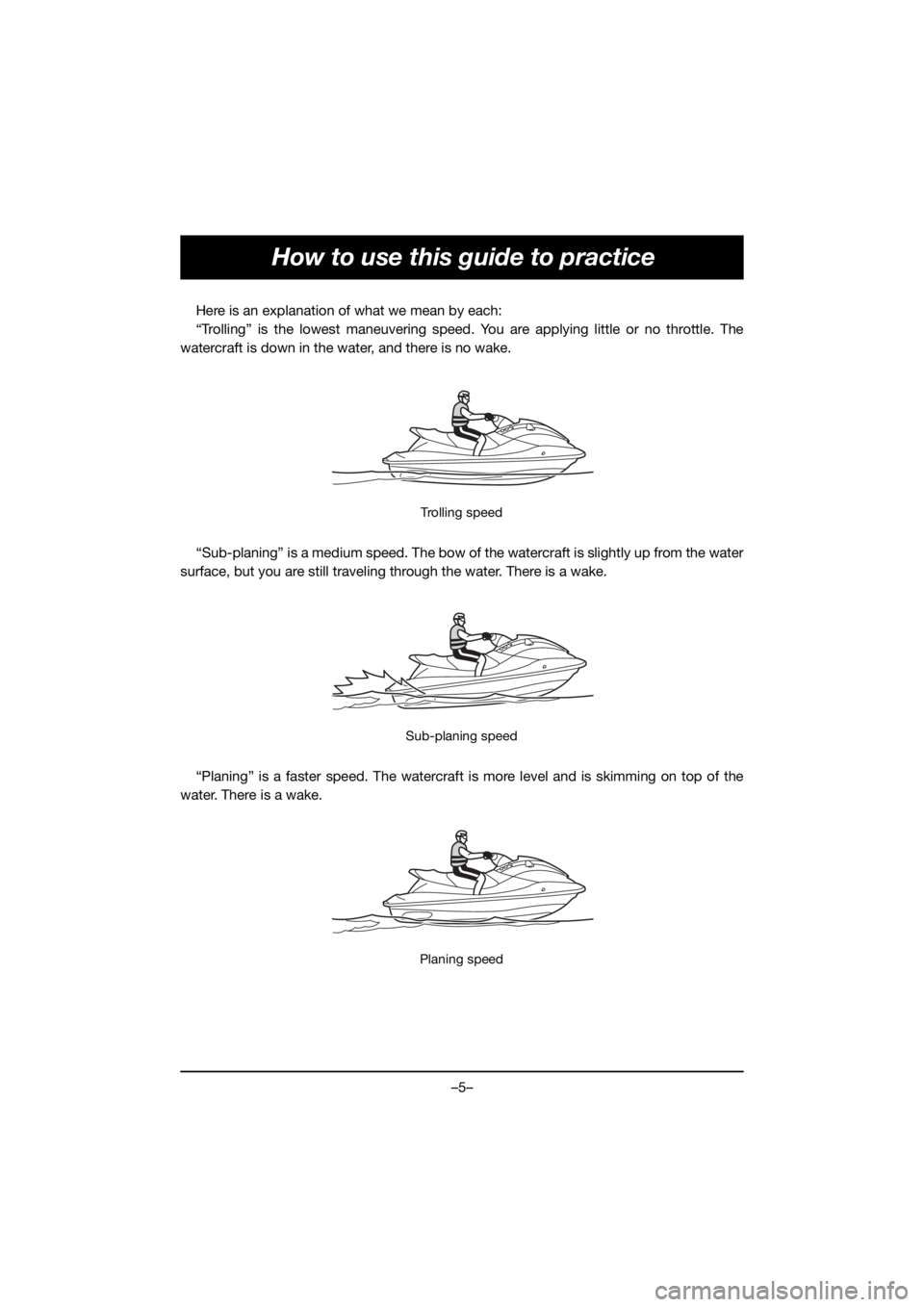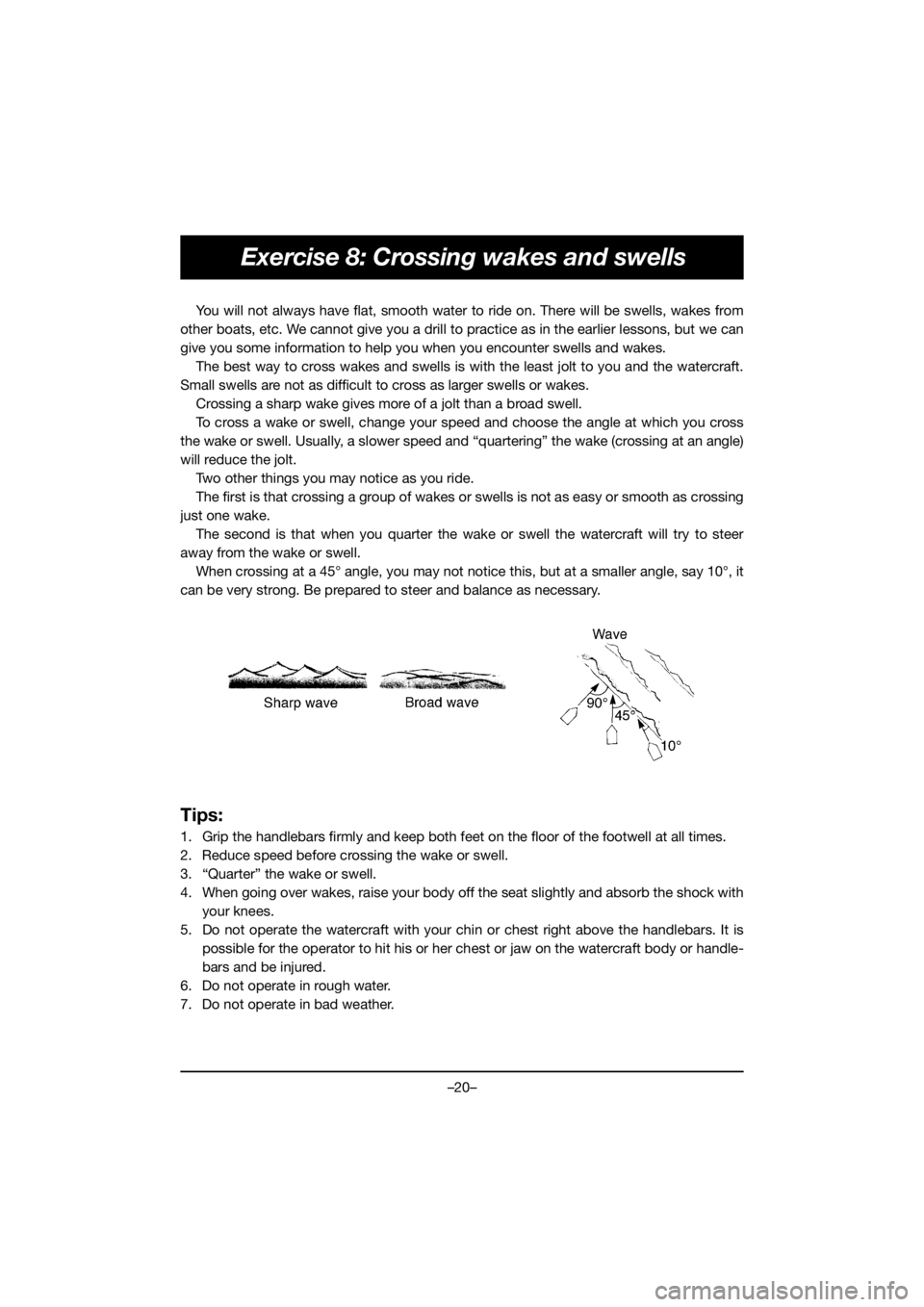–5–
How to use this guide to practice
Here is an explanation of what we mean by each:
“Trolling” is the lowest maneuvering speed. You are applying little or no throttle. The
watercraft is down in the water, and there is no wake.
“Sub-planing” is a medium speed. The bow of the watercraft is slightly up from the water
surface, but you are still traveling through the water. There is a wake.
“Planing” is a faster speed. The watercraft is more level and is skimming on top of the
water. There is a wake.
Trolling speed
Sub-planing speed
Planing speed
F4L-T71-forPrint.book Page 5 Wednesday, July 3, 2019 10:38 AM
–20–
Exercise 8: Crossing wakes and swells
You will not always have flat, smooth water to ride on. There will be swells, wakes from
other boats, etc. We cannot give you a drill to practice as in the earlier lessons, but we can
give you some information to help you when you encounter swells and wakes.
The best way to cross wakes and swells is with the least jolt to you and the watercraft.
Small swells are not as difficult to cross as larger swells or wakes.
Crossing a sharp wake gives more of a jolt than a broad swell.
To cross a wake or swell, change your speed and choose the angle at which you cross
the wake or swell. Usually, a slower speed and “quartering” the wake (crossing at an angle)
will reduce the jolt.
Two other things you may notice as you ride.
The first is that crossing a group of wakes or swells is not as easy or smooth as crossing
just one wake.
The second is that when you quarter the wake or swell the watercraft will try to steer
away from the wake or swell.
When crossing at a 45° angle, you may not notice this, but at a smaller angle, say 10°, it
can be very strong. Be prepared to steer and balance as necessary.
Tips:
1. Grip the handlebars firmly and keep both feet on the floor of the footwell at all times.
2. Reduce speed before crossing the wake or swell.
3. “Quarter” the wake or swell.
4. When going over wakes, raise your body off the seat slightly and absorb the shock with
your knees.
5. Do not operate the watercraft with your chin or chest right above the handlebars. It is
possible for the operator to hit his or her chest or jaw on the watercraft body or handle-
bars and be injured.
6. Do not operate in rough water.
7. Do not operate in bad weather.
F4L-T71-forPrint.book Page 20 Wednesday, July 3, 2019 10:38 AM

